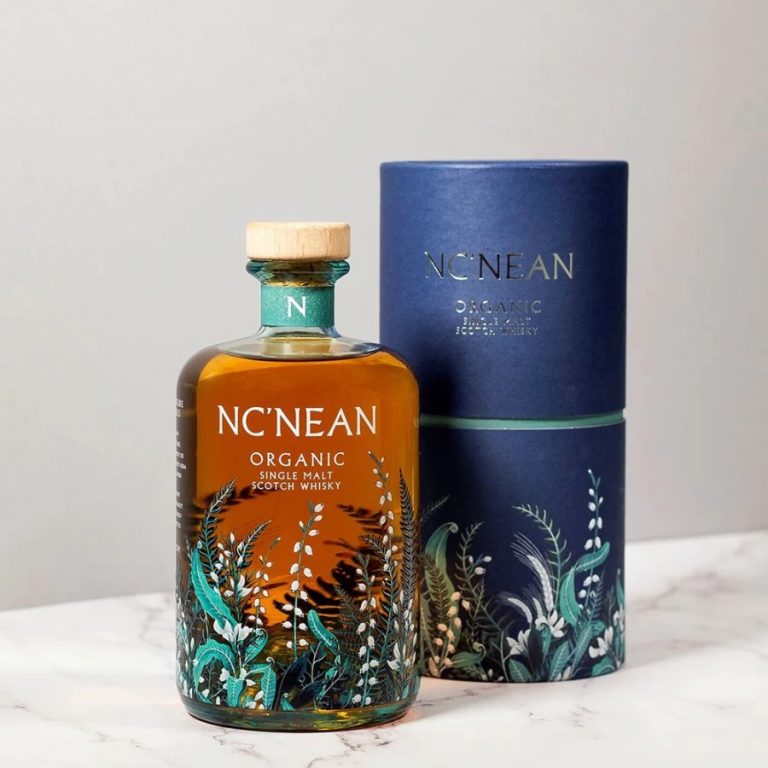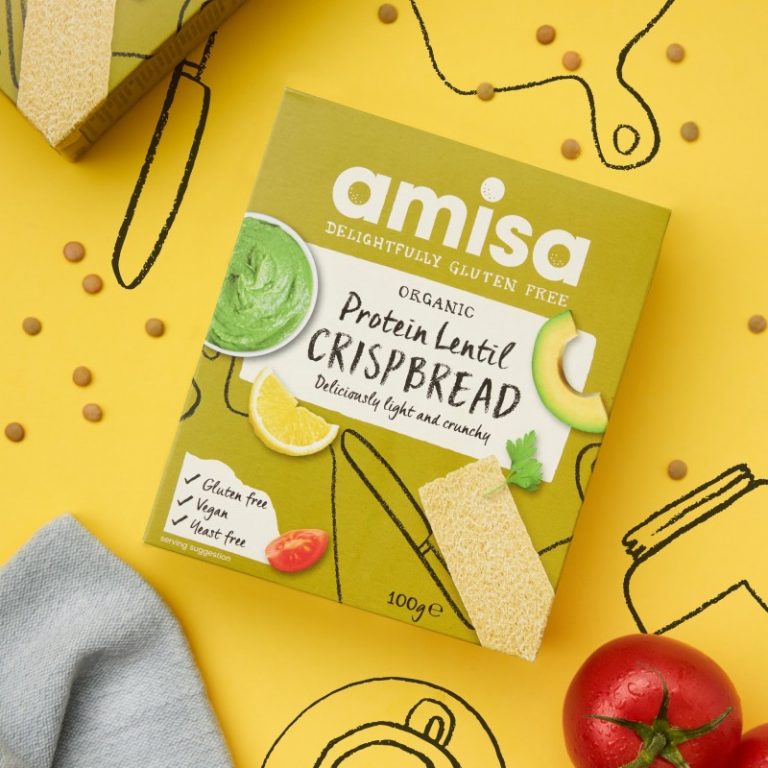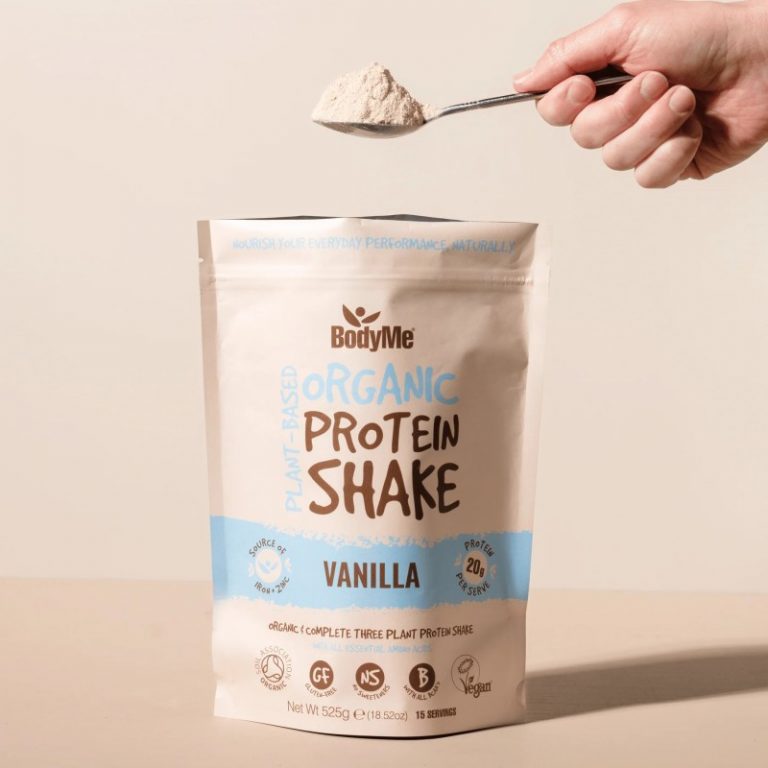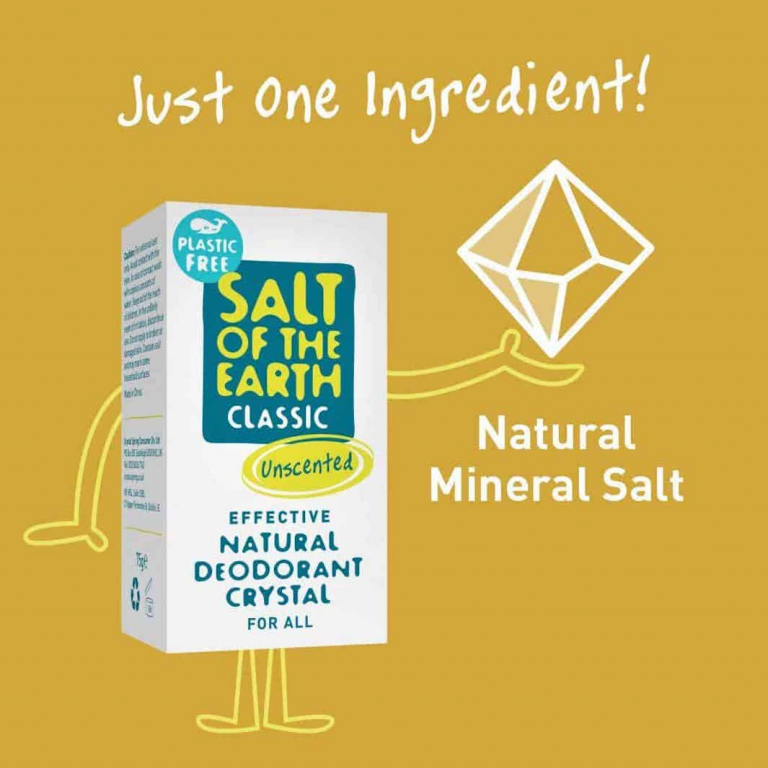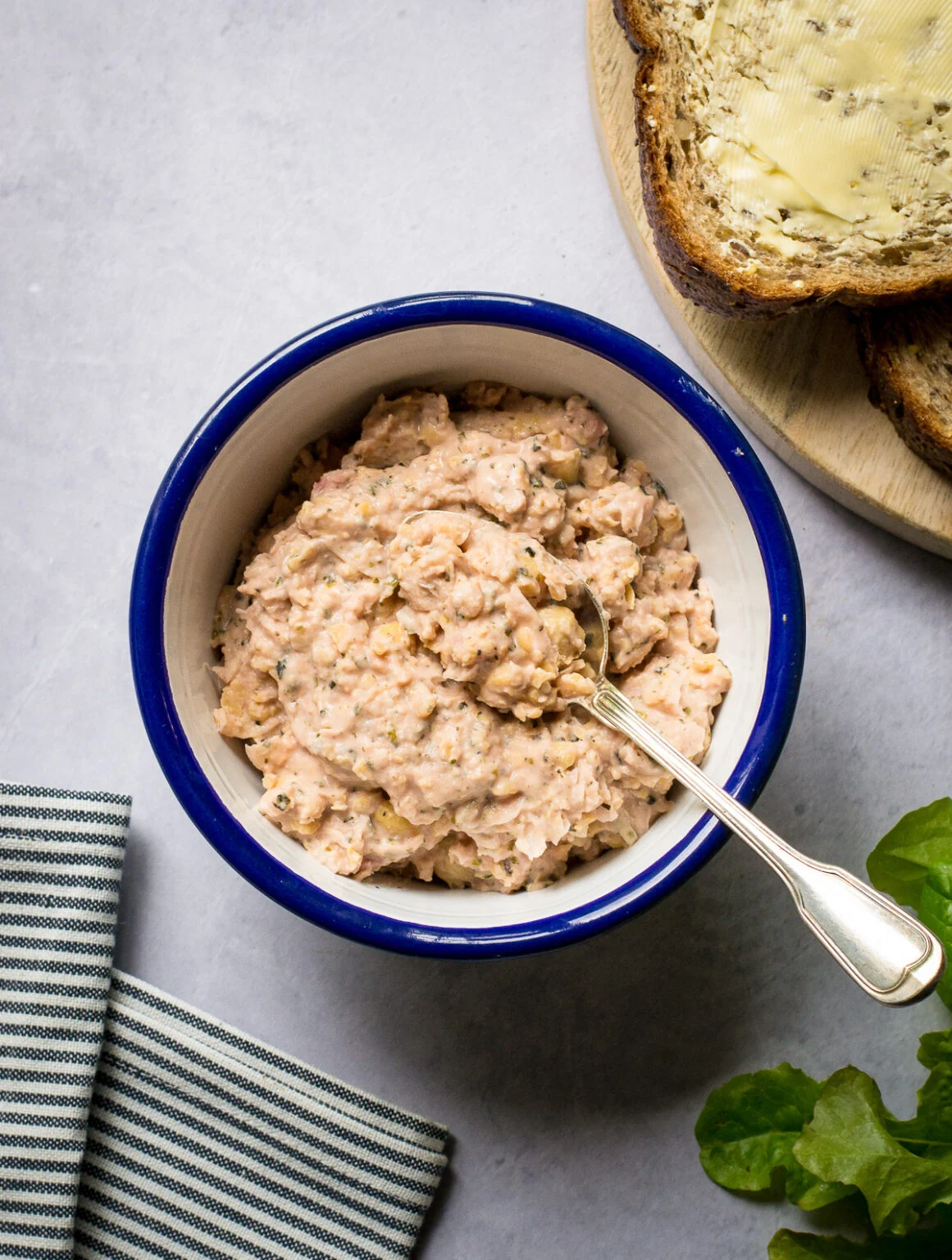
Tuna has long been a lunchbox staple and a go-to for quick meals, but traditional tuna fishing is causing serious problems for our oceans. Concerns like overfishing, mercury build-up, and accidental harm to dolphins have made many people rethink their seafood choices. These issues aren’t just about the planet—they affect our health as well.
As demand for safe, sustainable, and ethical foods rises, plant-based alternatives to tuna have started popping up on supermarket shelves. People choose these options to reduce their impact on the environment, avoid unwanted chemicals, and keep animals out of harm’s way. Whether you want a greener plate, a healthier heart, or a clear conscience, there are now more choices than ever.
Avoid seafood for thyroid issues. Read our post on food safety for people and pets.
Dolphins (that swim alongside yellow fin tuna) are at at risk from tuna fishing. Bluefin tuna is endangered, as it’s used to make Asian sushi).
Problems with Traditional Tuna Fishing
Tuna sandwiches and sushi rolls seem simple, but the route from ocean to plate paints a more troubling picture. Many traditional tuna fishing and processing practices come with big risks for our seas, sea life, and health. Looking below the surface, several issues stand out—some well-known, others less obvious but just as serious. Let’s break down where the true problems with tuna lie.
Overfishing: Tuna at Risk
Fishing boats scoop up huge numbers of tuna every year. Wild tuna populations can’t keep up. Overfishing happens when more tuna are caught than can reproduce, and it endangers the future of beloved species like bluefin tuna. This isn’t small-scale damage, either. In some cases, certain breeds are listed as threatened or endangered due to high demand.
Key facts about tuna overfishing:
- Pacific bluefin and Atlantic bluefin are both considered at risk.
- Skipjack, bigeye, and yellowfin tuna are also being caught at unsustainable rates.
- The loss of tuna disrupts food chains and weakens the entire marine ecosystem.
Large fishing fleets often use advanced technology that gives them an advantage over wild fish. Tuna just can’t replenish their numbers fast enough.
By-Catch: More Than Just Tuna
Tuna fishing isn’t as targeted as it sounds. Gear like purse seine nets and longlines often trap much more than just tuna. Dolphin by-catch is a well-known problem—many dolphins swim with tuna, so they get swept up in the same nets.
Why does by-catch matter?
- Dolphins, sharks, turtles, and even seabirds end up caught, injured, or killed in the process.
- Some tuna sold as “dolphin safe” still carries some risk, especially when standards aren’t well enforced.
- These losses pile up and threaten even more sea life.
- Purse Seine nets to catch skipjack tuna often catch dolphins, sharks and turtles.
- Longline fishing to catch yellowfin tuna often catch sharks, turtles and seabirds.
Harm to Marine Ecosystems
Catching tuna changes more than just tuna populations. Removing big fish causes a ripple effect. Predators like tuna help keep smaller fish and plankton in check. Their loss may lead to sudden spikes in smaller creatures, throwing marine balance off-kilter.
What happens when tuna populations shrink?
- The health of coral reefs and open water systems may drop.
- Unstable food chains can trigger fish population crash.
- Smaller fish sometimes become over-plentiful, which can stress plant life and other animals.
Every species is important to the wider ocean “web.” When we disrupt one thread, the whole system can unravel.
Mercury and Health Risks
Tuna are apex predators. Their diets include lots of smaller fish, which means they build up mercury in their bodies over time. Eating too much tuna can expose people to high levels of mercury.
Mercury in tuna can cause:
- Nerve damage
- Memory and learning problems in children
- Developmental delays in unborn babies
Pregnant women and young children are most at risk, leading to strict seafood warnings in many places. While an occasional tuna sandwich may not cause harm, eating a lot can quietly add up to dangerous levels.
Other Food Safety Concerns
Canned tuna is convenient, but it comes with some risks beyond mercury. Rare but serious, botulism can occur when tuna is improperly canned or stored. Botulism poisoning is life-threatening and requires urgent medical help.
Other food safety concerns include:
- Poor handling practices, which can lead to spoilage or contamination.
- Undeclared allergens in processing plants.
While major outbreaks are rare, they’re a reminder that safe handling and cleanliness are always critical.
What It All Means for Your Plate
Traditional tuna comes packed with complex problems—overfishing, by-catch of precious sea life, harm to ocean ecosystems, and health risks from mercury or spoiled products. With so much on the line, more people are seeking plant-based tuna alternatives as a safer, kinder choice for themselves and the planet.
What Are Plant-Based Tuna Alternatives?

Plant-based tuna alternatives are products made to look, taste, and feel like real tuna, but they use plants instead of fish. These options are built on ingredients like legumes, soy, chickpeas, jackfruit, and sometimes seaweed for a savoury, ocean-like flavour.
Some come ready to eat from trusted brands, while others can be made fresh at home with just a few store cupboard staples. Both types help satisfy tuna cravings without affecting the sea.
Plant-based tuna usually contains:
- Legumes or pulses (like chickpeas or beans) for a flaky, firm bite.
- Soy products (such as tofu or textured soy protein) for a smooth, mild base.
- Tempeh to mimic the “shredded” texture of tinned tuna.
- Seaweed or other marine vegetables to add the briny, sea-like taste.
- Seasonings like lemon juice, vinegar, onions, garlic, and black pepper for the right tang.
Commercial brands take these basics and fine-tune them, while homemade recipes give you control over flavour and texture using what you have at home.
Popular Commercial Plant-Based Tuna Brands
Walk down the vegan section of any big UK supermarket or browse online, and you’ll spot several plant-based tuna brands. Each offers a unique spin on the fish-free formula, using their own blend of ingredients for taste and texture. Here are a few standouts:
- Good Catch: One of the best-known brands, Good Catch uses a special mix of six legumes (soy, peas, chickpeas, lentils, fava beans, and navy beans). The texture is flaky and holds up well in both cold and hot dishes. Their flavour is mild, which suits tuna mayo sandwiches or pasta salads.
- Loma Linda (Tuno): Loma Linda makes Tuno, a soy-based product with added seaweed for an ocean flavour. Tuno comes in tins and pouches, perfect for those who want an easy swap. The texture is a bit softer than tinned tuna, but it mixes well in classic tuna dishes.
- Vivera Plant Tuna: This brand uses soy and wheat protein for a chewier, meatier mouthfeel. It comes ready-flavoured, with a stronger, savoury taste that some say is closer to traditional tuna.
- Plant Pioneers No Tuna Flakes (Sainsbury’s): This is a store-brand option found at Sainsbury’s. Made with soy and fava beans, it is sold ready to use in sandwiches or jacket potatoes. The texture is chunkier, and the seasoning is well balanced.
Differences in taste and texture can be subtle or bold, depending on the brand. Some go for a mild profile, while others pack more of the distinct, briny flavour that tuna lovers expect.
Homemade Plant-Based Tuna Recipes
For many, making plant-based tuna at home is the most satisfying (and affordable) route. Popular recipes use easy-to-find ingredients and simple kitchen tools. Most mimic tuna’s flaky quality and savoury, slightly tangy taste.
Popular bases for homemade versions include:
- Chickpeas: Mashed chickpeas offer a flaky bite, pale colour, and mild taste that soaks up flavourings. Add vegan mayo, seaweed flakes, a squirt of lemon, and a pinch of black pepper for a classic “chuna” salad.
- Tofu: Firm tofu crumbles well and absorbs seasoning. Press to remove extra water, then shred or mash, mixing with vegan mayo, capers, nori flakes, and a dash of vinegar. This base is light, subtle, and adapts to many dishes.
- Tempeh: Crumbled tempeh creates a dense, satisfying mixture. Steam or blanch to soften the slight bitterness, then season with mustard, vegan mayo, and seaweed seasonings for a strong tuna mimic.
Tips for bringing the flavours together:
- Add diced celery, onion, or gherkin for crunch and taste.
- A small amount of seaweed (like nori or wakame) brings in a salty, ocean-like element.
- Season well, and use a squeeze of lemon for brightness.
Most home recipes only take five or ten minutes to prep and work well for lunches or quick snacks. The process comes down to mashing the base, stirring in your wet ingredients, layering with crunch or herbs, and serving on toast, in jacket potatoes, or rolled up in sushi.
While commercial products offer convenience and consistency, homemade versions put you in full control of taste, price, and portion. Both options give you the rewarding feeling of making a kinder choice every time you crave tuna.
Plant-Based vs Traditional Tuna
Plant-based tuna alternatives do more than fill your sandwich or sushi roll. They offer a nutritional swap that can suit many lifestyles and health needs. Understanding how they stack up against classic canned tuna helps you make the best choice for your diet, especially if you’re thinking about mercury risk, food safety, or a plant-forward eating style. Here’s a breakdown of the key nutrients, health concerns, and who wins out in different nutrition categories.
Protein, Omega-3s, Fibre, and Sodium: Head-to-Head
Tuna has a reputation as a protein powerhouse, but plant-based options hold their own in many ways. While the mix isn’t identical, both types offer their unique set of nutrients.
Plant-based tuna has around the same protein (20g) per 100g as tuna, with slightly less omega 3 fats (but you can these from other plant-based sources like nuts, seeds and oils) and more fibre (tuna has none).
*Note: Numbers reflect a general average. Check individual packaging for specific brands and recipes.
Traditional tuna delivers more protein per bite, but many plant-based versions provide enough to keep you full and energised. The real difference? Fibre. Plant-based tuna brings fibre to the table, something fish can’t offer. Fibre supports gut health and helps you stay satisfied for longer.
Omega-3 is another point of difference. While tuna’s omega-3s are naturally from fish oil, some plant-based tunas add algae oil or flaxseed to bump up these healthy fats. You’ll often get a lower level, but still benefit from the plant and seed oils.
Sodium can be high in both. Some canned and plant-based products use salt for flavour and preservation, so if you’re watching your salt intake, always check the label.
Mercury and Food Safety: The Big Difference
Many people love tuna for its protein and omega-3, but worry about mercury and contamination. This is a real issue, especially for those who eat a lot of fish or are pregnant.
- Traditional tuna can contain mercury, a heavy metal that builds up in larger fish. Eating too much can be harmful, especially to pregnant women and children.
- Canned tuna can also rarely carry foodborne illnesses, such as botulism, if not processed or stored correctly.
- Plant-based tuna contains zero mercury and no risk of fish-borne botulism, as it’s made from vegetables, legumes, soy, or grains. This makes it a safe swap from a food safety perspective, both for daily eaters and for vulnerable groups.
Are Plant-Based Tuna Products Safe for Pregnant Women?
Pregnancy brings new concerns around food safety and baby’s health. Tuna often comes with clear warnings for anyone pregnant. During pregnancy, health experts often advise limiting or avoiding certain fish:
- Mercury risk: Tuna can have measurable mercury levels. Mercury passes to the baby, affecting brain and nervous system development.
- Foodborne illness: Improper handling or storage of fish can lead to listeria, botulism, or other bacterial infections. Pregnant women are more at risk of complications from these illnesses.
- Government guidelines often set strict weekly limits on tuna (for example, no more than two small cans per week).
Plant-based tuna changes the conversation:
- No mercury: There’s zero chance you’ll eat mercury-contaminated fish because there’s no fish involved.
- Lower risk of bacterial illness: Legume and soy-based products, especially those that are shelf-stable or refrigerated, pose much less risk for listeria or botulism. Basic food hygiene is still important, but the dangers are lower.
- Nutritional bonus: Many plant-based options are fortified with B12, iron, or omega-3s from algae, which helps meet the needs of pregnancy without needing to rely on fish.
Here are some benefits that stand out for expectant mothers:
- Safe protein and fibre: Plant-based tuna can deliver 10–20g protein per serving, along with fibre for better digestion.
- Less sodium and additives: Some brands focus on whole, simple ingredients and keep salt in check.
- No contamination worries: You can eat plant-based tuna more freely without counting portions or reading health warnings about mercury.
If you’re pregnant, swapping tuna for a plant-based version brings peace of mind. Most people find it’s a simple way to keep eating favourite lunches and snacks, skip complex portion calculations, and support both baby’s and mum’s health.
- Always check labels for allergens like soy or wheat if you have sensitivities.
- If you’re seeking omega-3s, look for varieties with added algae oil (DHA), a vegan source with the same benefits as fish-based omega-3.
- Pair plant-based tuna with whole grain bread or crackers, fresh veg, and a squeeze of lemon for a satisfying, safe meal.
Key takeaway: Plant-based tuna wins for pregnancy with its clean record on mercury, low risk for foodborne illness, and extra nutrients like fibre and iron. This makes it a top choice for anyone wanting a worry-free fish alternative during pregnancy.
Environmental and Ethical Benefits
Switching to plant-based tuna goes far beyond your lunch plate—it’s a powerful choice that can shrink your environmental footprint, protect endangered marine life, and limit harm to sea animals. Every bite made from plants instead of fish can help address some of the most serious problems linked to traditional tuna fishing.
Lowering Pressure on Wild Tuna Populations
Traditional tuna fishing has pushed wild tuna stocks close to their breaking point. Overfishing isn’t just a small, distant issue; the Food and Agriculture Organization (FAO) reports that more than one-third of global fish stocks are fished beyond sustainable limits. Tuna is at the top of that list, with some species already critically endangered.
What makes plant-based tuna stand out?
- No fish are removed from the ocean, so wild stocks can begin to recover.
- By choosing a plant alternative, you send a message that sustainable and ocean-friendly choices matter.
- The more plant-based options people pick, the less economic pressure there is to catch tuna in large numbers.
Swapping a tin of tuna for a plant-based version is a small move that, repeated across millions of lunches, could give real breathing space for tuna populations to bounce back.
Preventing By-Catch and Protecting Sea Animals
Tuna fishing often means much more than just tuna in a net. As you’ve seen, by-catch can kill dolphins, turtles, and endangered sharks. The fishing methods used for tuna—like longlines and purse seine nets—don’t discriminate. When you pick plant-based tuna, you help stop the chain of silent suffering that goes unseen in oceans every day.
Benefits at a glance:
- No accidental by-catch of dolphins or turtles.
- Less demand for fishing gear that destroys habitats or snags unintended animals.
- Protects reef fish, rays, and even seabirds that often get caught up with tuna.
A single tin of tuna might not seem like it comes at a heavy cost, but across all the canned tuna sold worldwide, millions of non-target creatures pay the price. Going plant-based is a direct way to opt out.
Cutting Greenhouse Gas Emissions
Seafood often gets mistaken for a “green” choice compared to beef or lamb, but tuna has a bigger climate impact than many realise. Large-scale fishing fleets use fuel-heavy ships that travel far from shore. Cold storage, canning, shipping, and processing all add up.
Research from the WWF finds that global fisheries—including tuna—are responsible for a large chunk of the food industry’s greenhouse gases.
When you swap fish for plants:
- The crops used for most plant-based tuna are grown with much lower energy and water needs than intensive fishing fleets.
- Processing legumes, soy, or chickpeas into tuna doesn’t require the same fuel-heavy ships or cold storage distances.
- Some brands even supply local or regional markets, meaning fewer transport miles.
A 2022 Oxford study estimated that plant-based meats, including fish alternatives, can cut greenhouse gas emissions by up to 90% compared to their animal-based versions. The tuna industry isn’t the biggest offender in meat and fish, but these swaps count.
Reducing Damage to Ocean Habitats
Dragging nets or setting hundreds of miles of lines can crush sensitive ocean environments. This leads to dead zones where coral and bottom plants no longer grow. Fish farms aren’t much better—they often create pollution or allow disease to spread.
How plant-based tuna helps:
- Growing and processing plants doesn’t disrupt ocean habitats in the same way.
- No risk of dragging nets across coral reefs, seagrass beds, or seabird nesting sites.
- Plant-based food systems can use land already under cultivation, without destroying more wilderness.
With so many coral reefs at risk and the pressure on coastal areas rising, every plant meal offers a safer, softer impact.
Ethical Advantages for Animals and People
There’s an ethical side too. Choosing plant-based tuna keeps tuna and other sea animals out of the food chain, but there are also social impacts to consider.
- No animal suffering: With plant alternatives, no animals are killed or stressed.
- Safer for people: Fishing can be a dangerous job. Reports from human rights groups have linked some tuna fisheries to underpaid labour or even forced work. By moving away from high-risk supply chains, plant foods offer more transparency.
- More inclusive diets: Plant-based foods fit a wider range of dietary needs and beliefs. People who are vegan, vegetarian, or follow religious dietary laws can enjoy the taste of tuna without compromise.
Many switch for the animals, many for the planet—but everyone wins when eco-friendly, kind choices become the norm.
Real World Examples and Progress
Consumer demand for plant-based tuna is growing quickly. As of 2023, the Good Food Institute reported a 40% jump in worldwide sales of plant-based seafood compared to the previous year. Supermarkets in the UK, US, and Europe are expanding their vegan seafood shelves.
Brands are responding by making plant-based options for classic tuna favourites: sandwiches, sushi, pasta salads, and more. This shift is helping move entire supply chains away from unsustainable practices. It’s a ripple effect with ocean-sized potential.
Key takeaway: Every swap from fish to plants is a concrete, guilt-free step toward protecting our oceans, sea creatures, and climate. With plant-based tuna, you’re choosing both taste and values.

